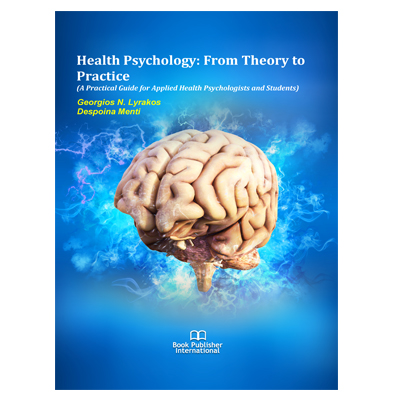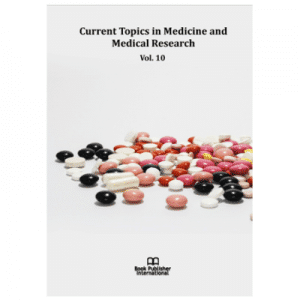In the following pages, we aim to put practice into theory and to help the reader understand the way that biological, psychological and sociological factors affect health and chronic conditions. This text is a serious examination of the recent literature concerning health psychology as a professional activity. It is a collective effort to put in order all the necessary occupational skills that a health psychologist is going to need while working with patients. That is why we did not stay in theory but went beyond that, in practice by giving the reader case studies on how to work and manage a patient with chronic conditions, making individual and group interventions both in situ and online and we tried to provide the students and the applied health psychologist with a practical guide he or she could use in any case.
Roughly speaking, the book proceeds from the simple to the complex, both with respect to the difficulty of the material and the types of learning that are discussed. Chapter 1 discusses the historical and conceptual Issues of health psychology with details about the history of health psychology, the underpinning theories and the four elements of health psychology concluding with the present role of a health psychologist in all settings.
The next chapter describes the Biopsychosocial model and deals with Biopsychosocial Issues in Health and its approach to health and illness, for certain disorders, such as diabetes mellitus, arthritis, depression, Post traumatic stress disorder and alcohol use disorder.
Chapter 3 refers to Health Behaviour Change, making an Introduction to health behaviours and then analyzing Health behaviour change theories and approaches. The models and theories that are analysed in this chapter are the Health Belief Model, the Protection Motivation Theory, the Social Cognitive Theory, the Theory of Reasoned Action/ Theory of Planned Behaviour, the Transtheoretical Model and other models, while there is reference to the Behaviour Change Techniques Taxonomy. The student will read in this chapter how to Develop, implement and evaluate behaviour change interventions, and then will be introduced to case studies of behaviour change interventions for individuals as well as groups or making his own research study for a patient population.
Chapter 4 surveys a wide range of findings in the fields of Chronic Illnesses, Stress and Pain Management, exploring at the beginning the patient – health professional relationship, and then discussing a wide range of Stress disorders in Chronic Illnesses including, Post-Traumatic Stress Disorder, Epilepsy, Obesity, Psoriasis, Systemic Lupus Erythematosus, Breast Cancer. The chapter continues with the analysis of the effect of pain Chronic Illnesses, using as examples Osteoporosis, Rheumatoid arthritis, Musculoskeletal back pain, HIV/ AIDS, Chronic Tension Type Headache and Cancer. The chapter ends with the effect of stigma in chronic illnesses and the role of the health professional in Congenital Heart Disease, Post-Traumatic Stress Disorder, Thalassemia, Obesity and Bulimia Nervosa.
The last chapter discusses Challenges & Future Directions in Health Psychology. The reader has the opportunity to learn about the role of health psychologists in clinical settings, culture and health psychology, inequities in health, issues regarding collaboration with health professionals, Precision medicine & ‘n-of-1 studies’, information about the technological Evolution and e-health, Positive, community & environmental psychology.
Finally, as complimentary material, the reader will find at the end of the book a practical guide for the evaluation of the patients during the health behaviour change techniques as a practical tip on how to begin with the treatment of his/her own patients.
By all means we hope this book to be learner-friendly. Throughout the text, we have tried to maintain an accessible voice; we want students and applied health psychologists to not only learn about clinical conditions (and about themselves), but also to enjoy reading this text, and we want them to treasure the learning process. Above all, we hope this edition lives up to the expectations of all those that want to work in the applied health psychology field, with the use of the biopsychosocial model of health, and find it a useful practical guide on how they should access the individual needs of a patient through the therapeutical process in a clinical setting or in private practice.





